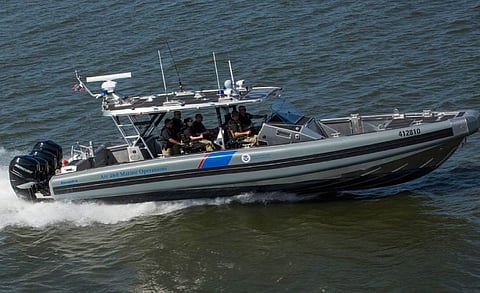

Bremerton, Washington-based SAFE Boats International has handed over the final one of 52 interceptor boats in a series ordered by federal law enforcement agency US Customs and Border Protection (CBP).
The aluminium-hulled, centre console vessel is the last to be delivered to the CBP in fulfilment of a US$48.4 million contract for 52 boats, which have been officially designated as coastal interceptor vessels (CIVs). The first CIV was delivered in 2016, and all vessels in the order have completely replaced the CBP's older 39-foot (11.8-metre) interceptors, which were originally acquired to serve as interim platforms pending the introduction of the SAFE Boats newbuilds into service.
The CIVs were custom-built to meet the specific mission requirements set forth by the Department of Homeland Security, the CBP's parent agency. The boats are therefore durable and highly manoeuvrable to enable their use in high-speed interceptions whether operating out in the open sea or closer to the coast. Duties will include counter-drug patrols, anti-human trafficking interdictions, and search and rescue (SAR) missions.
The CIVs each have an LOA of 41 feet (12.5 metres), a beam of 12 feet (3.7 metres), and a draught of two feet (0.66 metres). Shock-mitigating seats are available for three crewmembers and 10 other personnel, though the boat is designed to carry up to 43 people if needed, such as when transporting detained suspects or rescuing survivors of maritime accidents.
Power for the boat is provided by four Mercury Marine outboard engines. The outboards deliver a maximum speed of 58 knots and a range of over 350 nautical miles or an endurance of 10 hours thanks to the CIV's total fuel capacity of 550 gallons (2,080 litres).
The vessel is also equipped with a radar, a Teledyne FLIR thermal imaging camera, and three multi-function display screens showing navigation information. Other electronics include navigation electronics supplied by Garmin. These systems all draw power from a 12V DC battery.
The CIV's deck can transport cargo totalling 9,160 pounds (4,150 kilograms). The deck is also self-bailing and is covered in non-skid material for improved safety. The array of firefighting and lifesaving equipment includes handheld extinguishers, a life ring mount, and a telescoping swim ladder for use in recovering survivors from the water.
The newly delivered 52nd CIV will be operated by the CBP's Air and Marine Operations (AMO) branch in San Diego, California, starting early this year.
| 41-foot Coastal Interceptor Vessel | |
| SPECIFICATIONS | |
| Type of vessel: | Interceptor boat |
| Flag: | USA |
| Owner: | US Department of Homeland Security |
| Operator: | US Customs and Border Protection |
| Builder: | SAFE Boats International, USA |
| Hull construction material: | Aluminium |
| Length overall: | 41 feet (12.5 metres) |
| Beam: | 12 feet (3.7 metres) |
| Draught: | 2.0 feet (0.66 metres) |
| Capacity: | 9,160 pounds (4,150 kilograms) |
| Main engines: | 4 x Mercury Marine outboards |
| Maximum speed: | 58 knots |
| Night vision: | Teledyne FLIR |
| Other electronics: | Garmin |
| Other equipment installed: | Swim ladder |
| Safety equipment: | Life ring mount |
| Firefighting equipment: | Extinguishers |
| Fuel capacity: | 550 gallons (2,080 litres) |
| Crew: | 3 |
